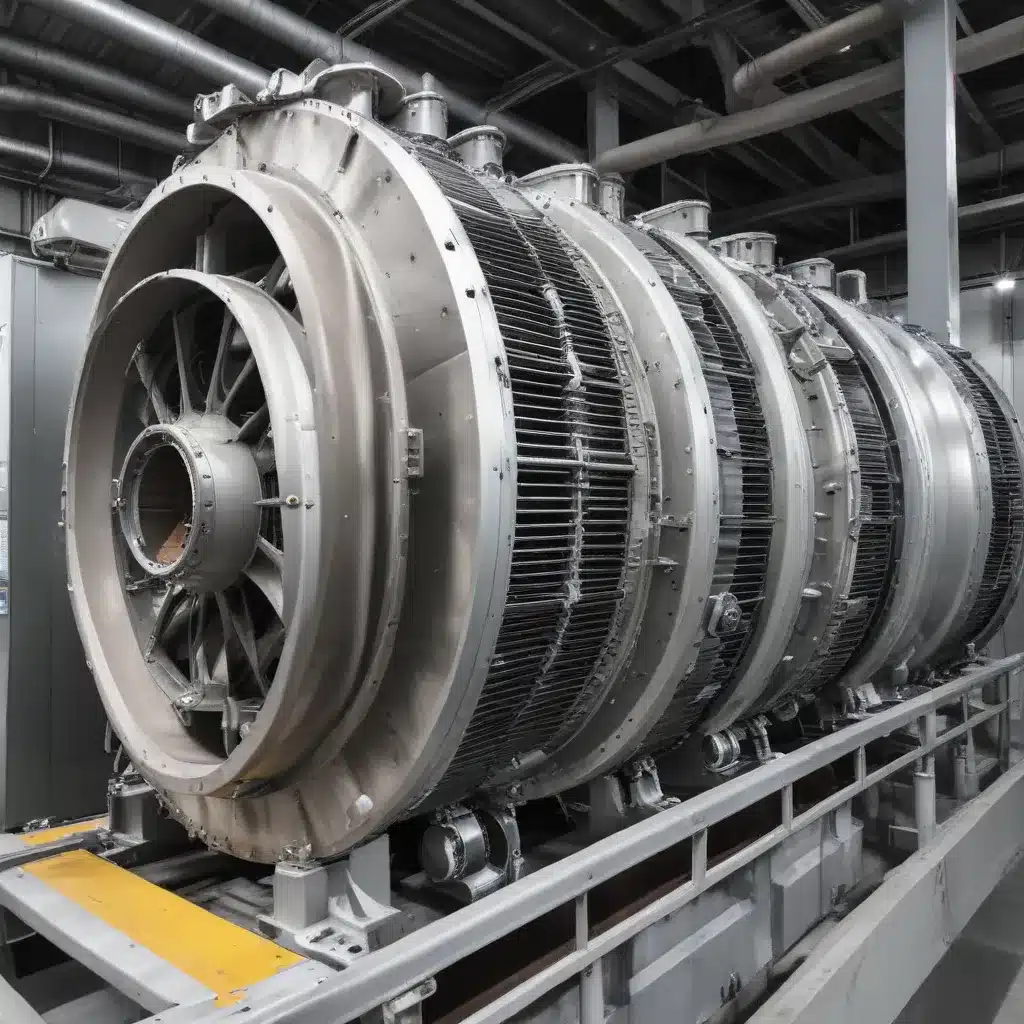
In the fast-paced world of industrial manufacturing, maintaining the optimal performance of critical equipment like air-cooled heat exchangers has become a crucial priority. As facilities strive to maximize uptime, minimize maintenance costs, and extend the lifespan of their assets, the concept of predictive maintenance, enabled by condition monitoring, has emerged as a game-changer.
The Rise of Predictive Maintenance
Traditionally, maintenance strategies for air-cooled heat exchangers have relied on time-based, scheduled interventions or reactive responses to equipment failures. However, this approach often falls short in today’s competitive landscape, where unplanned downtime can be crippling and the costs of equipment repairs or replacements can quickly spiral out of control.
Predictive maintenance, on the other hand, leverages real-time data collection and advanced analytics to identify potential issues before they escalate into major problems. By continuously monitoring the condition of critical components, such as fans, motors, or tube bundles, facility managers can detect early signs of degradation or impending failures and take proactive measures to address them.
The Benefits of Predictive Maintenance
Adopting a predictive maintenance approach for air-cooled heat exchangers can deliver a multitude of benefits, including:
Increased Economic Efficiency
By addressing equipment issues before they lead to unplanned downtime, predictive maintenance enhances economic efficiency. The constant monitoring of data allows for early identification of problems, minimizing the risk of costly, unplanned shutdowns and reducing overall maintenance expenses.
Higher Uptime and Reliability
Predictive maintenance maximizes equipment uptime by proactively addressing potential issues before they cause failures or disruptions. This ensures smooth, uninterrupted operations, allowing facilities to meet production targets and satisfy customer demands.
Extended Equipment Lifespan
Through timely maintenance and the prevention of severe damage, predictive maintenance helps to optimize the performance and extend the lifespan of air-cooled heat exchangers. By addressing problems before they escalate, the need for expensive repairs or premature replacement is significantly reduced.
Optimal Preventive Maintenance Timing
Predictive maintenance leverages condition monitoring data to determine the optimal timing for preventive maintenance activities. By analyzing the health state of components and following the degradation curve, maintenance can be scheduled before functional failure occurs, ensuring that interventions are carried out when they are most needed.
Improved Machine Performance
The data collected through condition monitoring provides valuable insights into the performance of air-cooled heat exchangers. By analyzing this data using advanced analytics and machine learning algorithms, facility managers can identify patterns, trends, and areas for optimization, leading to improved overall efficiency and productivity.
Condition Monitoring: The Backbone of Predictive Maintenance
Condition monitoring is the cornerstone of a successful predictive maintenance program for air-cooled heat exchangers. By continuously collecting and analyzing data from various sensors and monitoring systems, facility managers can gain a comprehensive understanding of the equipment’s health and performance.
Some key parameters that can be monitored in air-cooled heat exchangers include:
- Vibration levels: Excessive vibration can indicate issues with fan imbalance, bearing wear, or structural problems.
- Temperatures: Monitoring the temperature of critical components, such as bearings, motors, and tube bundles, can reveal signs of fouling, corrosion, or other operational issues.
- Airflow and pressure drop: Changes in airflow or pressure drop across the heat exchanger can indicate the presence of fouling, blockages, or fan malfunctions.
- Electrical parameters: Monitoring the voltage, current, and power consumption of the fans and motors can provide insights into the overall efficiency and potential issues.
By analyzing these data points, facility managers can create customized maintenance plans that address the specific needs of their air-cooled heat exchangers, ensuring optimal performance and extended service life.
Predictive Maintenance in Action: Case Studies
HEINEKEN: Optimizing Production Line Performance
At HEINEKEN’s Den Bosch brewery, the harsh working environment posed several challenges for the air-cooled heat exchangers. To address these issues, the company upgraded its equipment with drives that incorporated condition-based monitoring features. This allowed HEINEKEN to continuously monitor the performance of its critical assets, identify potential problems early, and implement proactive maintenance strategies. As a result, the brewery experienced a significant reduction in unplanned downtime, improved overall equipment effectiveness, and enhanced productivity.
Rivoira Group: Preserving Fruit Quality with Reliable Refrigeration
In the food processing industry, the reliability of air-cooled heat exchangers is paramount for maintaining product quality and safety. At Rivoira Group, a leading fruit producer, the implementation of condition-based monitoring features in their VLT® drives helped ensure the utmost reliability of their refrigeration systems. By monitoring key parameters, the company was able to prevent potential issues and ensure that their fruit was preserved perfectly, meeting the stringent quality standards of their customers.
Embracing the Future of Air-Cooled Heat Exchanger Maintenance
As the industrial landscape continues to evolve, the adoption of predictive maintenance strategies, enabled by advanced condition monitoring technologies, has become a critical imperative for facilities seeking to optimize the performance and longevity of their air-cooled heat exchangers.
By leveraging real-time data, analytics, and machine learning, facility managers can now proactively address equipment issues, avoid unplanned downtime, and unlock substantial cost savings. Moreover, the insights gained from condition monitoring can drive continuous improvement, leading to enhanced overall efficiency and a competitive edge in the market.
To learn more about the latest advancements in air-cooled heat exchanger technology and how predictive maintenance can benefit your facility, explore the resources available at Air Cooled Heat Exchangers. Our team of experts is dedicated to providing the knowledge and support you need to optimize the performance and reliability of your critical assets.

